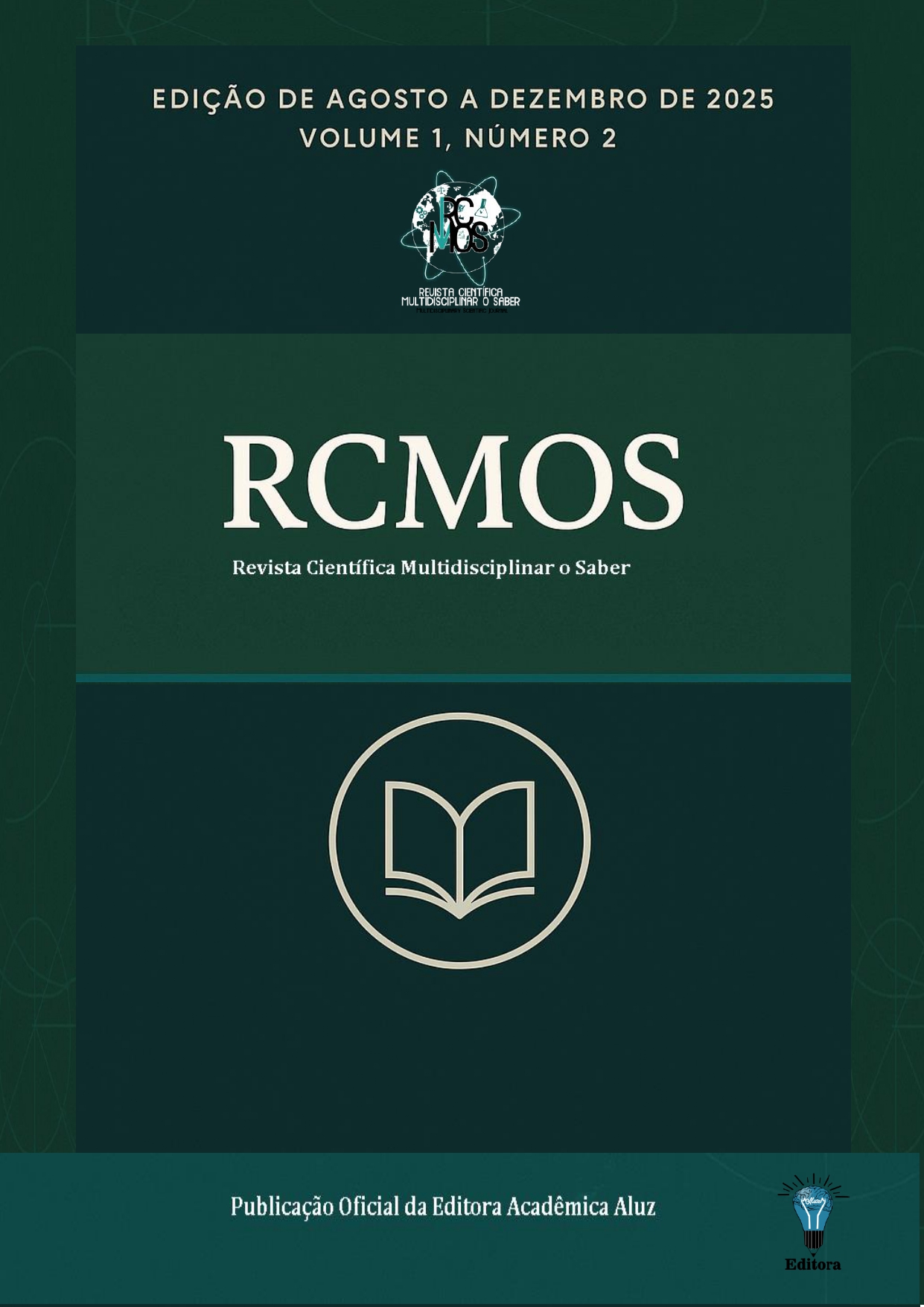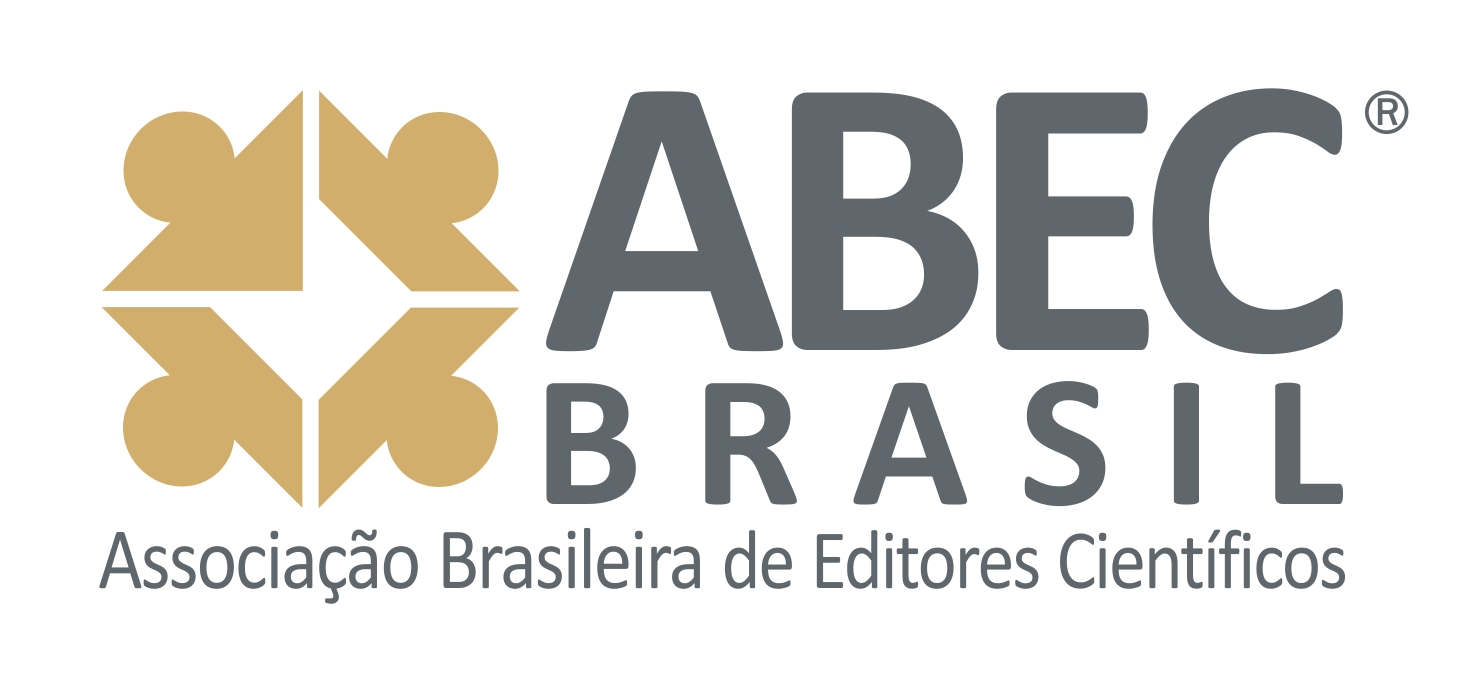Carcinicultura Sustentável: O Potencial do Reuso de Água e Antimicrobianos Não Antibióticos para um Futuro Responsável
DOI:
https://doi.org/10.51473/rcmos.v1i2.2025.1270Keywords:
Alternativas a Antibióticos, Impacto Ambiental , Agenda 2030, Aquicultura SustentávelAbstract
Este artigo de revisão explora o potencial do reuso de água na carcinicultura sustentável como estratégia para enfrentar os desafios do uso intensivo de recursos hídricos e minimizar a escassez e a poluição. A gestão inadequada da água é um problema crítico na carcinicultura, podendo contribuir para impactos significativos na saúde humana e ambiental. Além disso, o uso de antibióticos na aquicultura é um fator que impulsiona a crise global de resistência antimicrobiana. A adoção de sistemas inovadores de reuso de água, combinada com a aplicação de antimicrobianos não antibióticos, emerge como uma abordagem promissora para alcançar uma produção mais responsável e alinhada com os Objetivos de Desenvolvimento Sustentável (ODS) da Organização das Nações Unidas (ONU), promovendo a sustentabilidade e minimizando contaminações. A análise da literatura demonstra a necessidade de estudos mais aprofundados sobre a viabilidade e o potencial de sistemas integrados, bem como sobre os efeitos a longo prazo dos antimicrobianos não antibióticos na microbiota dos viveiros e na saúde dos camarões.
Downloads
References
ALEXY, R.; KÜMPEL, T.; KÜMMERER, K. Assessment of degradation of 18 antibiotics in the closed bottle test. Chemosphere, v. 57, n. 6, p. 505-512, 2004. DOI: https://doi.org/10.1016/j.chemosphere.2004.06.024
ANJOS, D. C. et al. Uso do efluente da carcinicultura na irrigação do arroz e seu efeito nas características químicas do solo. In: INOVAGRI INTERNATIONAL MEETING, 4., 2017, Fortaleza. Anais eletrônicos. Fortaleza: Inovagri, 2017. p. 1-10. Disponível em: https://icolibri.com.br/public/anais/TC4650922.pdf. Acesso em: 5 abr. 2025.
AVNIMELECH, Y. Biofloc technology: a practical guide book. Baton Rouge: The World Aquaculture Society, 2007.
BARTON, M. D. Antibiotic use in animal feed and its impact on human health. Nutrition Research Reviews, v. 13, n. 2, p. 279-299, 2000. DOI: https://doi.org/10.1079/095442200108729106
BENÍTEZ-GÓMEZ, A.; CASTRO-ALBA, V.; RODRÍGUEZ-HERRERA, R. Effects of Nisin and Lysozyme on Growth Inhibition and Biofilm Formation Capacity of Staphylococcus aureus Strains Isolated from Raw Milk and Cheese Samples. Journal of Food Protection, v. 75, n. 9, p. 1627-1631, 2012. DOI: https://doi.org/10.4315/0362-028x.jfp-12-001
BONDAD-REANTASO, M. G. et al. Review of alternatives to antibiotic use in aquaculture. Reviews in Aquaculture, v. 15, n. 4, p. 1421-1451, 2023. DOI: https://doi.org/10.1111/raq.12786
BOSTOCK, J. et al. Aquaculture: global status and trends. Philosophical Transactions of the Royal Society B: Biological Sciences, v. 365, n. 1554, p. 2897-2912, 2010. DOI: https://doi.org/10.1098/rstb.2010.0170
BOXALL, A. B. A. et al. Are veterinary medicines causing environmental risks? Environmental Science & Technology, v. 37, n. 15, p. 286A-294A, 2003. DOI: https://doi.org/10.1021/es032519b
BRASIL. Resolução CONAMA n. 312 de 10 de outubro de 2002. Dispõe sobre parâmetros, definições e limites de áreas de preservação permanente. Diário Oficial da União, Brasília, DF, n. 224, seção 1, p. 92-95, 21 nov. 2002.
BRASIL. Ministério da Saúde. Secretaria de Vigilância em Saúde. Departamento de Vigilância das Doenças Transmissíveis. Plano de ação nacional de prevenção e controle da resistência aos antimicrobianos no âmbito da saúde única 2018-2022 (PAN-BR). Brasília: Ministério da Saúde, 2019. 24 p. Disponível em: https://bvsms.saude.gov.br/bvs/publicacoes/plano_prevencao_resistencia_antimicrobianos.pdf. Acesso em: 3 abr. 2025.
CABELLO, F. C. Heavy use of antimicrobials in aquaculture: a growing problem for human and animal health. Environmental Microbiology, v. 8, n. 7, p. 1131-1137, 2006. DOI: https://doi.org/10.1111/j.1462-2920.2006.01054.x
CARVALHO, R. S. de et al. Influência do reuso de águas residuárias na qualidade microbiológica do girassol destinado à alimentação animal. Revista Ambiente & Água, Taubaté, v. 8, n. 3, p. 157-167, 2013.
COSTA-PIERCE, B. A. Radical Aquaculture: Transformative Socio-Ecological Systems Promoting the Sustainable Development Goals. World Aquaculture, v. 21, 2021.
COTTER, P. D.; HILL, C.; ROSS, R. P. Bacteriocins: developing innate immunity for food. Nature Reviews Microbiology, v. 3, n. 10, p. 777-788, 2005. DOI: https://doi.org/10.1038/nrmicro1273
COTTER, P. D.; ROSS, R. P.; HILL, C. Bacteriocins—a viable alternative to antibiotics? Nature Reviews Microbiology, v. 11, n. 2, p. 95-105, 2013. DOI: https://doi.org/10.1038/nrmicro2937
CUNHA, Iara Nunes et al. Aspectos regulatórios para reúso de água no Brasil. In: CONGRESSO BRASILEIRO DE GESTÃO AMBIENTAL, 2., 2012, João Pessoa. Anais eletrônicos. João Pessoa: Instituto Brasileiro de Estudos Ambientais, 2012. Disponível em: https://www.ibeas.org.br/congresso/Trabalhos2012/VIII-005.pdf. Acesso em: 11 abr. 2025.
DA SILVA, V. L. et al. Alternatives to antibiotics in aquaculture: a mini-review. Brazilian Journal of Biology, v. 80, n. 2, p. 257-265, 2020.
DE SCHRYVER, P. et al. The basics of bio-flocs technology: the added value for aquaculture. Aquaculture, v. 277, n. 3-4, p. 125-137, 2008. DOI: https://doi.org/10.1016/j.aquaculture.2008.02.019
DIANA, J. S. et al. Responsible aquaculture in 2050: Valuing local conditions and human innovations will be key to success. BioScience, v. 63, n. 4, p. 255-262, 2013. DOI: https://doi.org/10.1525/bio.2013.63.4.5
DUAN, W. et al. Occurrence and ecotoxicity of sulfonamides in the aquatic environment: A review. Science of The Total Environment, v. 820, 153178, 2022. DOI: https://doi.org/10.1016/j.scitotenv.2022.153178
FAO - FOOD AND AGRICULTURE ORGANIZATION OF THE UNITED NATIONS. Responsible use of antibiotics in aquaculture. Roma: FAO, 2005. Disponível em: https://openknowledge.fao.org/server/api/core/bitstreams/bf43d03e-11bf-47d1-83c2-fd02cc94baa4/content. Acesso em: 5 jun. 2025.
FIGUEIRÊDO, M. C. B. D. et al. Environmental impacts of the inland shrimp farming. Engenharia Sanitaria e Ambiental, v. 11, n. 3, p. 231-240, 2006. DOI: https://doi.org/10.1590/S1413-41522006000300006
GOTHWAL, R.; SHASHIDHAR, T. Fate of antibiotics in wastewater treatment plants and their environmental significance: A review. African Journal of Biotechnology, v. 14, n. 47, p. 3173-3184, 2015.
GÜRSOY, Ö.; ASLANTAŞ, Ö. The antibacterial activity of nisin against Staphylococcus aureus strains isolated from various foods. Food Science and Technology, v. 42, e56421, 2022.
JERONIMO, C. E.; BALBINO, C. P. Caracterização físico-química de efluentes da carcinicultura e seus impactos ao meio ambiente. Revista Eletrônica em Gestão, Educação e Tecnologia Ambiental, Santa Maria, v. 8, n. 8, p. 1639-1650, 2012. DOI: https://doi.org/10.5902/223611706273
JIJIE, R. et al. Zebrafish as a Screening Model to Study the Single and Joint Effects of Antibiotics. Pharmaceuticals, v. 14, n. 6, 578, 2021. DOI: https://doi.org/10.3390/ph14060578
JONES, K. C.; VOULVOULIS, N.; LESTER, J. N. Human and environmental risks of veterinary antibiotics. Reviews of Environmental Contamination and Toxicology, v. 187, p. 1-34, 2006.
KEMPER, N. Veterinary antibiotics in the aquatic and terrestrial environment. Ecological Indicators, v. 8, n. 1, p. 1-13, 2008. DOI: https://doi.org/10.1016/j.ecolind.2007.06.002
KOVALAKOVA, P. et al. Occurrence and toxicity of antibiotics in the aquatic environment: A review. Chemosphere, v. 251, 126351, 2020. DOI: https://doi.org/10.1016/j.chemosphere.2020.126351
LEITÃO, Renato C. et al. Reúso da água da despesca na produção de camarão. Revista Brasileira de Engenharia Agrícola e Ambiental, Campina Grande, v. 15, n. 12, p. 1314-1320, 2011. DOI: https://doi.org/10.1590/S1415-43662011001200014
LI, J. et al. Antibiotic pollution and its impact on aquatic ecosystems: A review. Environmental Science and Pollution Research, v. 26, n. 30, p. 30425-30438, 2019.
LI, Q. et al. Current status, ecological risk and sources of antibiotics in shrimp farm environments of Southeast Asia. Chemosphere, v. 310, 136735, 2023.
LI, S. et al. Synergistic antibacterial activity of nisin and lauric acid against methicillin-resistant Staphylococcus aureus. Food Chemistry, v. 314, 126179, 2020.
LIMA, C. C.; BENJAMIM, S. C. C.; SANTOS, R. F. S. dos. Mecanismo de resistência bacteriana frente aos fármacos: uma revisão. CuidArte, Enferm, v. 11, n. 2, p. 105-113, 2017.
LOW, W. Y.; TAN, G. Y. A.; LETCHUMANAN, V. A review of antibiotic usage in aquaculture: Global trends and future perspectives. Aquaculture, v. 532, 735977, 2021.
MARTINS, C. I. M. et al. Recirculating aquaculture systems in Europe: A state-of-the-art review. Aquaculture Engineering, v. 43, n. 3, p. 63-70, 2010. DOI: https://doi.org/10.1016/j.aquaeng.2010.09.002
MCINTOSH, D. et al. Toward integrating olive production with inland shrimp farming. World Aquaculture-Baton Rouge, v. 34, n. 1, p. 16-20, 2003.
MONTEIRO, S. G. Resistência antimicrobiana: um problema de saúde pública. Revista Multidisciplinar em Saúde, v. 1, n. 1, p. 79-88, 2020.
MOURA, P. G. et al. Water reuse: a sustainable alternative for Brazil. Engenharia Sanitaria e Ambiental, v. 25, n. 5, p. 791-808, 2020. DOI: https://doi.org/10.1590/s1413-4152202020180201
NASCIMENTO, Ermeton Duarte do; ARAÚJO, Magnólia Fernandes Florêncio de. Antimicrobial resistance in bacteria isolated from aquatic environments in Brazil: a systematic review. Revista Ambiente & Água, Taubaté, v. 9, n. 1, p. 239-249, 2014. DOI: https://doi.org/10.4136/ambi-agua.1343
NASCIMENTO, M. S. et al. Bacteriocins from lactic acid bacteria and their potential in the biocontrol of Listeria monocytogenes in foods. Trends in Food Science & Technology, v. 19, n. 7, p. 372-383, 2008.
O’NEILL, J. Tackling drug-resistant infections globally: final report and recommendations. London: The Review on Antimicrobial Resistance, 2016.
PINTO, H. S. et al. A Crise Hídrica e suas Consequências. Brasília, DF: Núcleo de Estudo e Pesquisas - Senado Federal, 2014. 32 p.
PRUDEN, A. et al. Antibiotic resistance genes as emerging contaminants: Studies in northern Colorado. Environmental Science & Technology, v. 40, n. 23, p. 7445-7450, 2006. DOI: https://doi.org/10.1021/es060413l
RABELO RUIZ, M. et al. Respuesta del microbioma intestinal de animales del sector avícola, porcino y piscícola al tratamiento con probióticos y extractos de aliáceas. Revista Científica de Medicina Veterinaria, v. 13, n. 1, p. 1-10, 2022.
REVERTER, M. et al. Essential oils as antimicrobial agents in aquaculture: a review. Aquaculture, v. 434, p. 117-129, 2014.
RISHI, P. et al. Combination antimicrobial therapy: a potential strategy to combat multi-drug resistant bacteria. Journal of Infection and Chemotherapy, v. 6, n. 4, p. 189-195, 2014.
RUSHTON, J. et al. Antimicrobial use in aquaculture: analysis of information from 17 countries. Journal of Antimicrobial Chemotherapy, v. 69, n. 10, p. 2685-2692, 2014.
SALDANHA, T. C. B. Resistência antimicrobiana: um problema de saúde pública global. Revista de Ciências da Saúde Nova Esperança, João Pessoa, v. 16, n. 1, p. 71-78, 2018.
SANDU, S. I.; BOARDMAN, G. D.; WATTEN, B. J.; BRAZIL, B. L. Factors influencing the nitrification efficiency of fluidized bed filters with a plastic beans medium. Aquacultural Engineering, v. 26, n. 1, p. 41-59, 2002. DOI: https://doi.org/10.1016/S0144-8609(02)00003-1
SMITH, P.; HINEY, M.; SAMUELSEN, O. B. Bacterial resistance to antimicrobial agents used in fish farming: a critical evaluation of method and meaning. Diseases of Aquatic Organisms, v. 54, n. 2, p. 141-176, 2003.
SOULSBY, E. J. L. Helminths, arthropods and protozoa of domesticated animals. 7. ed. Chichester: John Wiley & Sons, 2012.
SOUZA, L. A. de. A utilização do efluente da carcinicultura em sistemas de bioflocos (biofloc technology) para produção de hortaliças em aquaponia. 2022. Dissertação (Mestrado em Engenharia Agrícola) – Universidade Federal Rural do Semi-Árido, Mossoró, 2022.
SUI, Q. et al. Occurrence, distribution, and ecological risk assessment of antibiotics in aquaculture environments from the Pearl River Delta, South China. Environmental Science and Pollution Research, v. 24, n. 18, p. 15309-15320, 2017.
SUN, W. et al. Occurrence and ecological risk assessment of antibiotics in shrimp farming areas of the Pearl River Estuary, South China. Environmental Science and Pollution Research, v. 28, n. 25, p. 33694–33706, 2021.
TIMMONS, M. B. et al. Recirculating aquaculture systems. Ithaca: Cayuga Aqua Ventures, 2002.
TOZE, S. Reuse of effluent water—benefits and risks. Agricultural Water Management, v. 80, n. 1-3, p. 147-159, 2006. DOI: https://doi.org/10.1016/j.agwat.2005.07.010
VAN BOECKEL, T. P. et al. Global trends in antimicrobial resistance in animals in low- and middle-income countries. Science, v. 364, n. 6439, eaaw1944, 2019. DOI: https://doi.org/10.1126/science.aaw1944
WHO. Global action plan on antimicrobial resistance. Geneva: World Health Organization, 2015.
WORLD ORGANISATION FOR ANIMAL HEALTH (WOAH). Aquatic Animal Health Code: Chapters 6.1 to 6.5. Paris: WOAH, 2022. Disponível em: https://rr-africa.woah.org/app/uploads/2022/09/en_csaa-2022.pdf. Acesso em: 3 jun. 2025.
WORLD ORGANISATION FOR ANIMAL HEALTH (WOAH). OIE List of Antimicrobials of Veterinary Importance. Paris: OIE, 2018. Disponível em: https://www.woah.org/app/uploads/2021/03/a-oie-list-antimicrobials-may2018.pdf. Acesso em: 2 jun. 2025.
WORLD ORGANISATION FOR ANIMAL HEALTH (WOAH). The OIE Strategy on Antimicrobial Resistance and the Prudent Use of Antimicrobials. Paris: OIE, 2016. Disponível em: https://www.woah.org/fileadmin/Home/eng/Media_Center/docs/pdf/PortailAMR/EN_OIE-AMRstrategy.pdf. Acesso em: 2 jun. 2025.
ZHOU, X. et al. Occurrence and distribution of antibiotics in sediments of mariculture farms along the coast of China. Science of The Total Environment, v. 574, p. 770-776, 2017.
ZIEMSKA, J.; RAJNISZ, A.; SOLECKA, J. New perspectives on antibacterial drug research. Central European Journal of Biology, v. 8, n. 10, p. 943-957, 2013. DOI: https://doi.org/10.2478/s11535-013-0209-6
Downloads
Published
Issue
Section
Categories
License
Copyright (c) 2025 Neila Lilyane da Silva Gomes, Janine Passos Lima, Angel Ramon Sanchez Delgado (Autor)

This work is licensed under a Creative Commons Attribution 4.0 International License.












